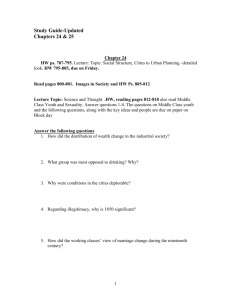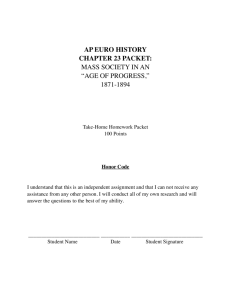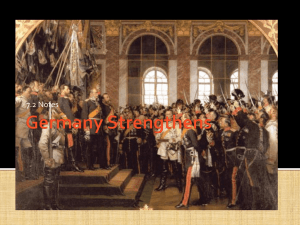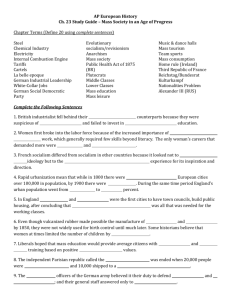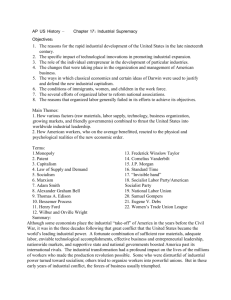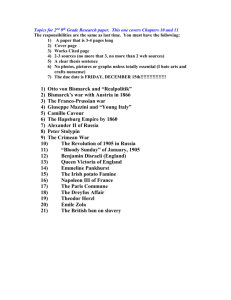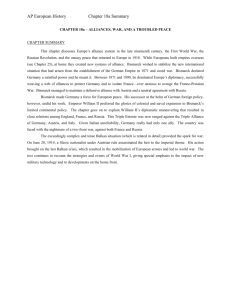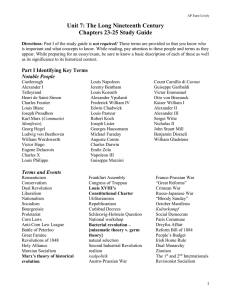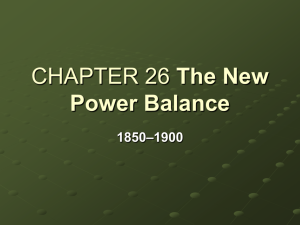APEH : Chapter 23 – The Age of Progress
advertisement
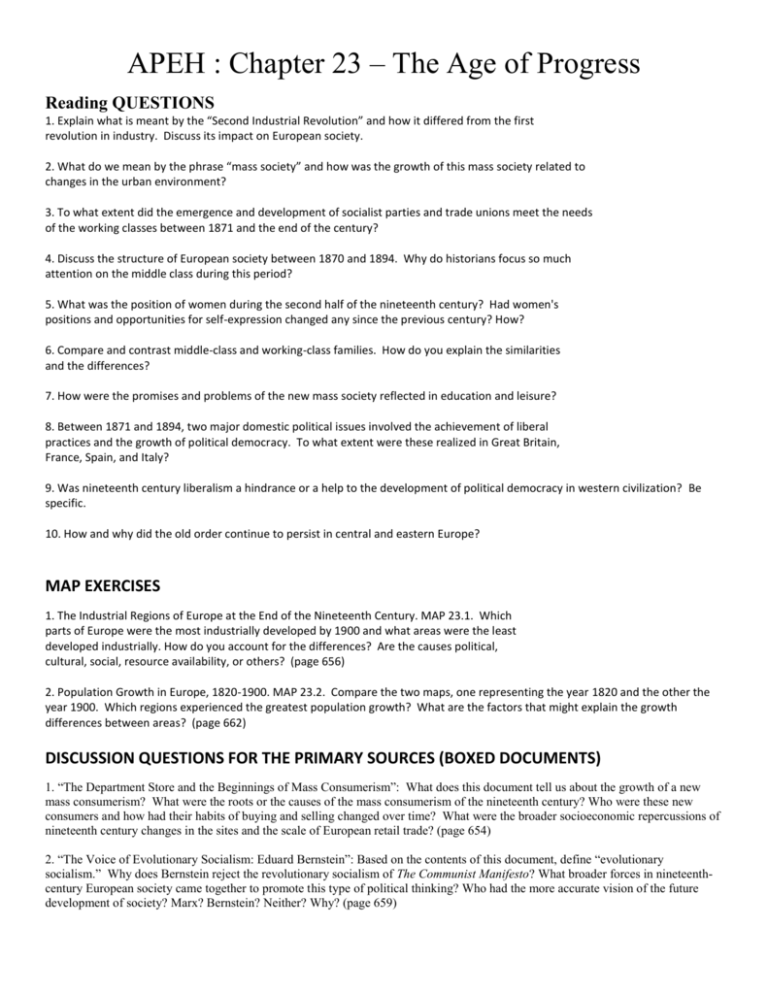
APEH : Chapter 23 – The Age of Progress Reading QUESTIONS 1. Explain what is meant by the “Second Industrial Revolution” and how it differed from the first revolution in industry. Discuss its impact on European society. 2. What do we mean by the phrase “mass society” and how was the growth of this mass society related to changes in the urban environment? 3. To what extent did the emergence and development of socialist parties and trade unions meet the needs of the working classes between 1871 and the end of the century? 4. Discuss the structure of European society between 1870 and 1894. Why do historians focus so much attention on the middle class during this period? 5. What was the position of women during the second half of the nineteenth century? Had women's positions and opportunities for self-expression changed any since the previous century? How? 6. Compare and contrast middle-class and working-class families. How do you explain the similarities and the differences? 7. How were the promises and problems of the new mass society reflected in education and leisure? 8. Between 1871 and 1894, two major domestic political issues involved the achievement of liberal practices and the growth of political democracy. To what extent were these realized in Great Britain, France, Spain, and Italy? 9. Was nineteenth century liberalism a hindrance or a help to the development of political democracy in western civilization? Be specific. 10. How and why did the old order continue to persist in central and eastern Europe? MAP EXERCISES 1. The Industrial Regions of Europe at the End of the Nineteenth Century. MAP 23.1. Which parts of Europe were the most industrially developed by 1900 and what areas were the least developed industrially. How do you account for the differences? Are the causes political, cultural, social, resource availability, or others? (page 656) 2. Population Growth in Europe, 1820-1900. MAP 23.2. Compare the two maps, one representing the year 1820 and the other the year 1900. Which regions experienced the greatest population growth? What are the factors that might explain the growth differences between areas? (page 662) DISCUSSION QUESTIONS FOR THE PRIMARY SOURCES (BOXED DOCUMENTS) 1. “The Department Store and the Beginnings of Mass Consumerism”: What does this document tell us about the growth of a new mass consumerism? What were the roots or the causes of the mass consumerism of the nineteenth century? Who were these new consumers and how had their habits of buying and selling changed over time? What were the broader socioeconomic repercussions of nineteenth century changes in the sites and the scale of European retail trade? (page 654) 2. “The Voice of Evolutionary Socialism: Eduard Bernstein”: Based on the contents of this document, define “evolutionary socialism.” Why does Bernstein reject the revolutionary socialism of The Communist Manifesto? What broader forces in nineteenthcentury European society came together to promote this type of political thinking? Who had the more accurate vision of the future development of society? Marx? Bernstein? Neither? Why? (page 659) 3. “The Housing Venture of Octavia Hill”: Discuss the housing venture of Octavia Hill. What did she hope to achieve? Was she successful? Why and/or why not? What does this document tell you about the new ambitions and civic responsibilities of private philanthropists in modern European urban society? Is this type of venture common among philanthropists today? Why or why not? (page 664) 4. “Advice to Women: Be Dependent”: According to Elizabeth Poole Sanford, what is the proper role of women? What particular social class is she addressing? What forces in late nineteenth-century European society do you believe merged to shape Sanford's understanding of “proper” gender roles? Was Sanford a merely a product of her own era? Is her advice relevant to today’s society? Why or why not? (page 668) 5. “The Fight Song: Sports in the English Public School”: Why did organized sports become a central feature of England’s public (private) schools? What does it say about middle- and upper-middle class educational ideals? What does it say about nineteenth century society? How would the singing of such songs and the virtues they express work to shape boys' conceptions of “proper” male behavior, masculine values, and masculinity itself? (page 673) 6. “A Leader of the Paris Commune”: What were the circumstances that led to the Paris Commune of 1871? What does this excerpt from the memoirs of the Parisian radical feminist Louise Michel tell you about new opportunities for political engagement available to female and male residents of great European nineteenth-century capital cities during the latter half of the nineteenth century? (page 675) 7. “Bismarck and the Welfare of the Workers”: What arguments does Bismarck advance for social welfare legislation? How can (and did) Bismarck benefit politically from these moves toward state protection of workers' socioeconomic interests? Was Bismarck merely bidding for votes? Why or why not? To what broader forces in nineteenth-century European social and political life is Bismarck responding through the formulation of these policies? (page 677) Vocabulary: 4. Thomas Edison and Joseph Swan 5. Graham Bell 6. Guglielmo Marconi 7. internal combustion engine 8. Gottlieb Daimler 9. Henry Ford and the assembly line 10. Wilbur and Orville Wright 11. cartels 13. Second Industrial Revolution 16. Contagious Diseases Acts 17. Wilhelm Liebknect and August Bebel 18. Social Democratic Party 19. Jean Jaures 20. May Day 21. Marxist “revisionism” 22. Eduard Bernstein 23. Michael Bakunin and anarchism 24. Public Health Act of 1875 25. V.A. Huber and Octavia Hill 27. plutocrats 28. Consuelo Vanderbilt 30. Lord Tennyson’s The Princess 31. Aletta Jacob and “family planning” 32. Boy Scouts 33. “yellow press” 37. Reform Act of 1884 38. Irish Home Rule 39. France’s Third Republic 40. the Commune 41. General Georges Boulanger 42. Spanish-American War 43. Cuba and the Philippines 44. the Reichstadt 45. Kulturkampf 46. Bismarck’s welfare legislation 47. William II 48. Magyarization 49. Alexander III and Nicholas II 50. Russification
